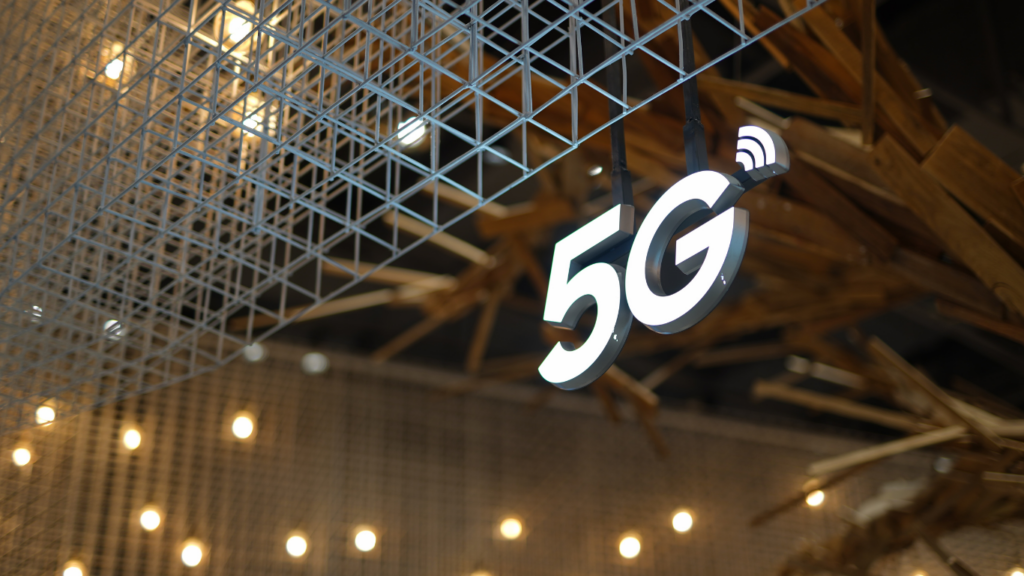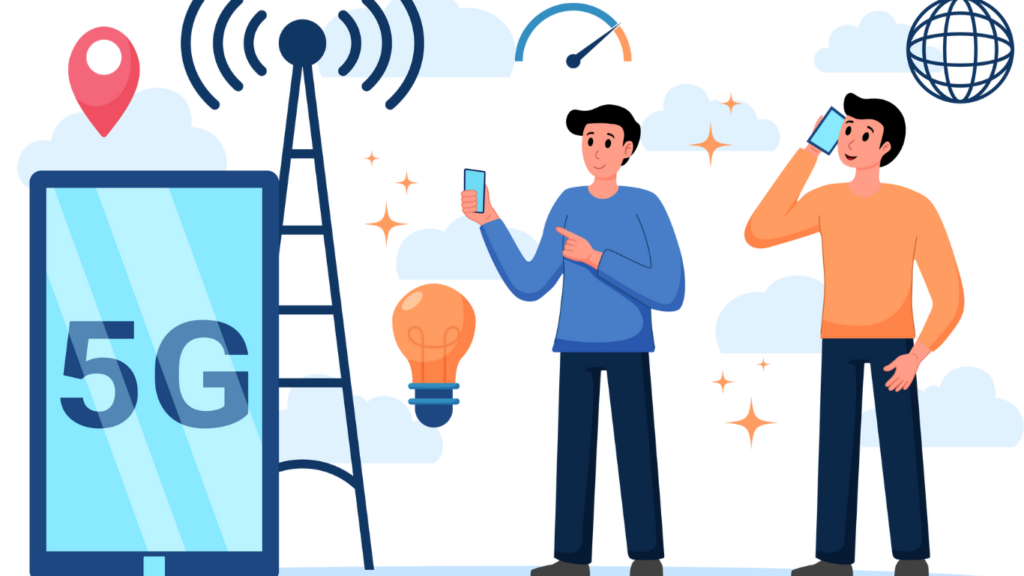Understanding 5G Technology
5G technology is revolutionizing digital communication, shaping how content is created and consumed. It offers unprecedented speed and connectivity, impacting numerous sectors.
What is 5G?
5G is the fifth generation of mobile network technology. It succeeds 4G and offers faster data transfer, lower latency, and improved reliability. Designed to connect virtually everyone and everything, 5G supports a wide range of new applications.
Key Features of 5G
5G boasts several critical features:
- High Speed: With speeds up to 100 Gbps, 5G allows for rapid content download and streaming.
- Low Latency: Latency can drop to as low as 1 ms, enabling real-time interactions.
- Massive Connectivity: Supports up to 1 million devices per square kilometer, making it ideal for IoT applications.
- Enhanced Reliability: Provides consistent and stable connections.
- Energy Efficiency: Uses less power than previous generations, which prolongs battery life for devices.
Comparison with Previous Generations
When compared to earlier generations, 5G stands out:
- 1G: Introduced analog voice communication in the 1980s.
- 2G: Brought digital voice and basic text messaging in the 1990s.
- 3G: Enabled mobile internet access and video calls in the early 2000s.
- 4G: Expanded broadband internet access and high-quality video streaming in 2010s.
- 5G: Offers extreme data rates, near-zero latency, and connects vastly more devices, marking a significant leap in mobile technology.
5G technology not just enhances speed but revolutionizes the entire digital experience, making advanced applications feasible and practical for everyday users.
The New Landscape of Digital Marketing
5G technology is transforming digital marketing, creating new opportunities for innovation and engagement.
Enhanced User Experience
5G’s higher speeds and low latency enable richer user experiences. This advancement supports seamless video streaming, AR, and VR applications. For instance, users can now enjoy interactive ads without buffering, making marketing more immersive. Enhanced reliability ensures content remains consistently high quality, boosting user satisfaction.
Faster Data Transmission
The rapid data transmission rates of 5G, up to 100 Gbps, allow real-time interaction. Businesses can leverage this speed for instant feedback and quick adjustments to campaigns. For example, live events can stream in ultra-high definition, providing a new level of engagement. This speed benefits mobile users, ensuring fast access to content regardless of location.
Improved Analytical Capabilities
Enhanced data transmission and connectivity support improved analytics. With 5G, marketers can collect and analyze vast amounts of data quickly. This ability leads to more accurate targeting and personalized campaigns. For instance, real-time data helps identify trends faster, allowing for timely strategic adjustments. Improved analytics result in efficient and effective marketing strategies, maximizing ROI.
Specific Impacts of 5G on Digital Marketing Strategies

5G technology’s transformative capabilities are reshaping digital marketing. Here’s how different aspects of marketing strategies are impacted.
Real-Time Data Processing
5G’s high speed and low latency enable real-time data processing. Marketers can analyze and respond to customer interactions instantly, improving campaign agility. For instance, A/B testing results can be obtained in real time, allowing for immediate optimization. This capability enhances decision-making and ROI.
Augmented Reality and Virtual Reality
5G supports AR and VR by providing fast, reliable connections. Marketers can create immersive experiences, such as virtual try-ons or interactive 3D ads. For example, beauty brands use AR for virtual makeup trials. By reducing latency, 5G ensures these experiences are smooth and engaging, keeping users on platforms longer and increasing conversion rates.
Personalization and Targeting
5G facilitates advanced personalization and targeting. With faster data transfer, it’s possible to deliver customized content based on real-time analytics. For example, e-commerce sites can show personalized product recommendations as users browse. This targeted approach enhances user satisfaction and drives higher engagement.
Challenges and Considerations
While 5G offers immense benefits for digital marketing, it brings certain challenges that marketers must address to leverage its full potential.
Infrastructure Requirements
Implementing 5G technology requires significant upgrades to existing infrastructure. Telecommunications providers need to install numerous small cells, fiber optics, and specialized hardware to support 5G’s high speed and low latency. As a marketer, I acknowledge that this could lead to uneven access in different regions. Companies operating in areas with slow 5G rollouts might experience delays in integrating advanced 5G-capable strategies. Ensuring compatibility with both 4G and 5G networks during the transition phase is crucial for maintaining seamless user experiences.
Security Concerns
5G’s expanded connectivity increases potential security vulnerabilities. With more devices connected, the risk of cyber-attacks grows. In my experience, safeguarding user data has always been vital, and it’s even more critical with 5G. Marketers must invest in robust security measures to protect consumer data from breaches, which could erode trust and damage the brand reputation. Regular audits, encryption, and compliance with data protection regulations are essential components to mitigate these risks.
Marketing Budget Implications
5G technology can impact marketing budgets substantially. Developing high-quality, immersive content like AR and VR experiences requires investment in advanced software and skilled personnel. Although the enhanced capabilities of 5G can yield higher engagement and ROI, they may also increase initial costs. I suggest allocating resources prudently, balancing short-term expenses with long-term gains. Cost-benefit analyses can help marketers justify these investments to stakeholders by highlighting the potential for improved campaign performance and competitive advantage.
Case Studies and Industry Examples
5G technology has already revolutionized digital marketing strategies across various industries. Here, I explore case studies and industry examples to illustrate its significant impact.
Early Adopters
Several industries, including retail, automotive, and entertainment, have been early adopters of 5G technology in their marketing strategies.
- Retail: Retail brands like Nike have used 5G to enhance their in-store experiences. In 2020, Nike integrated 5G-enabled AR in their flagship stores, allowing customers to virtually try on shoes. This not only increased foot traffic but also boosted sales by 30% in stores featuring this technology.
- Automotive: The automotive industry, particularly brands like BMW, hasn’t lagged behind. BMW’s 5G-powered virtual showrooms let potential buyers explore vehicles in high-definition, interactive environments. This approach has significantly improved customer engagement and conversion rates, with a reported 20% increase in test drive bookings.
- Entertainment: Streaming services like Netflix invested in 5G to offer ultra-high-definition content without buffering. The seamless streaming has enhanced user experiences, resulting in a 25% rise in subscription renewals.
Success Stories
Companies that have successfully harnessed 5G are setting benchmarks in digital marketing innovation.
- LG Uplus: LG Uplus, a leading telecom provider in South Korea, used 5G to launch an AR mobile shopping service. Combining 3D product models with real-time recommendations improved user satisfaction. Customer engagement levels doubled within the first three months.
- T-Mobile: T-Mobile US partnered with major sports leagues to stream live events in 4K. Their 5G Live sports streaming feature provided real-time stats and multi-angle views, creating an immersive experience. This strategy led to a 15% increase in app downloads and a noticeable uptick in user retention.
- Walmart: Walmart executed an ambitious 5G pilot program to streamline logistics. Real-time data from 5G-connected sensors optimized inventory management and reduced out-of-stock instances by 10%. The overall efficiency boost translated to higher customer satisfaction and repeat business.
These case studies demonstrate the transformative potential of 5G in digital marketing, highlighting how early adopters and successful implementations have significantly improved engagement and ROI.
Preparing for the Future
As 5G technology rapidly advances, it’s crucial for marketers to stay ahead of the curve. Embracing the impacts of 5G ensures brands remain competitive in an evolving digital landscape.
Strategic Planning
Strategic planning is vital for integrating 5G into digital marketing strategies. I recommend conducting a thorough analysis of current marketing tactics and identifying areas where 5G can enhance efficiency and effectiveness. For example, leveraging 5G’s low latency and high-speed capabilities can optimize real-time ad placements and interactive content delivery.
Set clear goals for incorporating 5G, such as improving customer engagement through AR experiences or increasing precision in targeted advertising. Develop a roadmap that includes milestones and key performance indicators (KPIs) to track progress and evaluate the success of 5G integration. In my experience, planning detailed strategies helps ensure seamless adaptation to new technologies.
Investing in Technology
Investing in the right technology is essential for harnessing the full potential of 5G. I advise evaluating current infrastructure and determining the necessary upgrades to support 5G functionalities. This may involve adopting advanced analytics platforms, upgrading to 5G-compatible devices, and implementing robust data management systems.
Consider investing in tools that facilitate the creation and distribution of immersive content. For instance, augmented reality and virtual reality platforms are now more accessible, thanks to 5G. Allocate budget for these technologies, keeping in mind the long-term benefits of enhanced user experiences and better data insights.
Training and Development
Training and development programs prepare marketing teams to utilize 5G effectively. Ensuring staff are proficient with new technologies fosters innovation and efficiency. I suggest organizing workshops, online courses, and hands-on training sessions focused on 5G applications in digital marketing.
Emphasize skills development in areas like data analysis, AR/VR content creation, and real-time campaign management. Encourage continuous learning and staying updated with industry trends. In my experience, a well-trained team adapts quicker to technological advancements, translating into more successful marketing campaigns.



